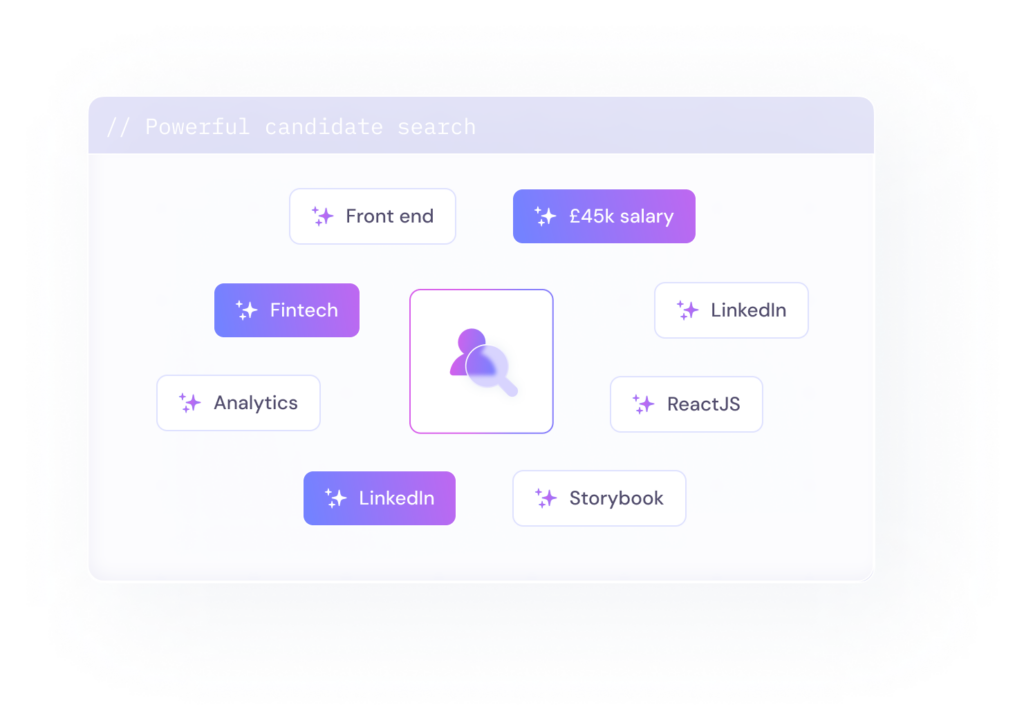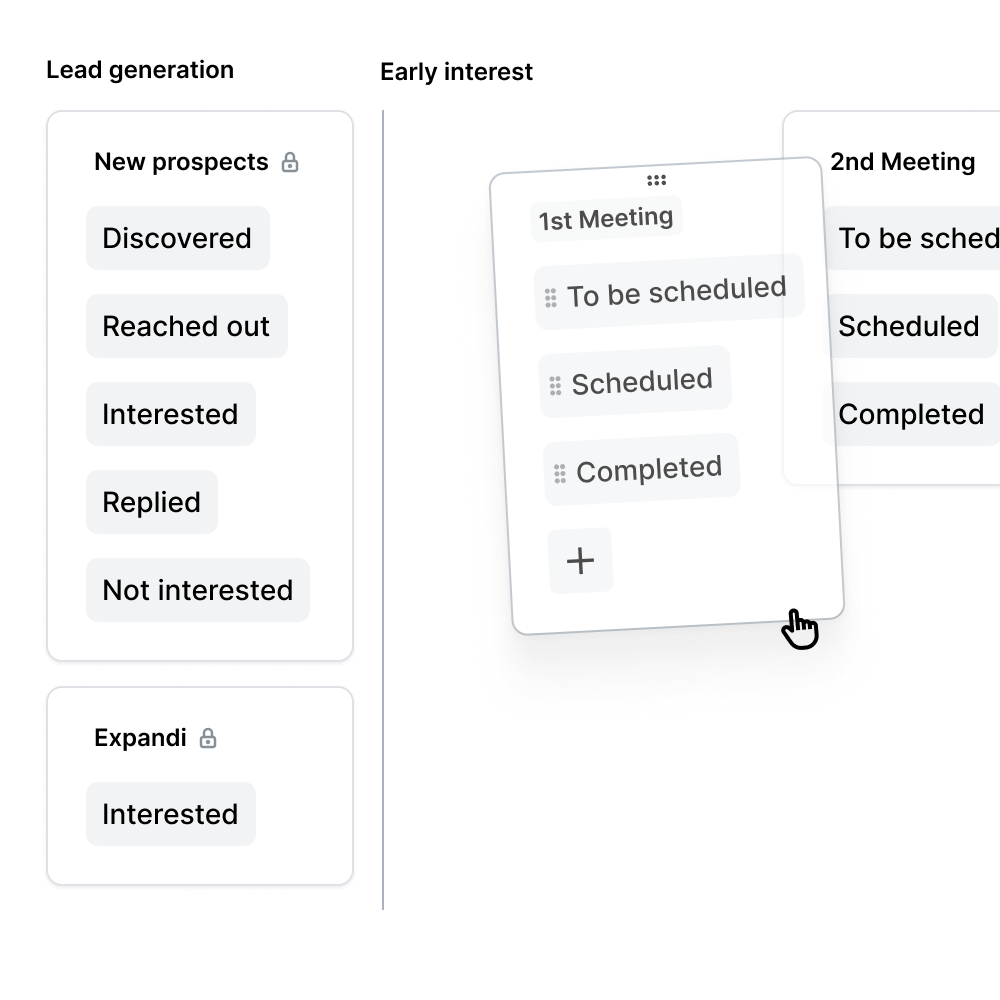
// Recruitment Technology, Executive Search Best Practices
The Cost of Not Using a Zero Input Recruitment CRM in Executive Search
08/11/2024
7 MIN
In the world of executive search, where relationships and timing are everything, a traditional recruitment CRM software can feel more like a burden than a benefit. They demand constant data entry, manual tracking, and endless updates that steal time from what really matters – building genuine connections with clients and candidates.
For many recruitment agencies, CRMs are supposed to simplify client and candidate relationship management, but they often fall short, introducing inefficiencies that slow down placements, reduce personalisation, and sometimes even risk losing valuable client opportunities.
Imagine a different kind of recruiting CRM software – one that works for you silently in the background.
A zero input recruitment CRM captures every interaction, updates profiles in real time, and removes the hassle of data entry altogether.
With this kind of system, every email, call, and meeting note is automatically logged and analysed, giving you a complete view of each candidate and client without the usual administrative drain.
Let’s explore how a zero input recruitment CRM can help you as an executive search recruiter address the key challenges and bring focus back to the people side of the business.
What Exactly is a Zero Input Recruitment CRM?
Think of it as a recruitment platform that doesn’t require any data entry or manual tracking. Unlike traditional CRMs that often weigh you down, the platform operates invisibly, automatically gathering, interpreting, and organising information from your emails, phone calls, chats, and meeting notes.
It’s more than a CRM that quietly compiles and updates data in the background, so you can focus entirely on your clients and candidates.
In essence, the platform is designed to align perfectly with the needs of recruitment businesses and executive search agencies. It acts as an intelligent partner in candidate and client relationship management rather than an administrative burden.
How does it work?
A modern recruitment software uses natural language processing (NLP), machine learning, and automation to pull and update data from various sources in real time.
- Automatically parses conversations – whether phone calls, emails, or messages – to capture key details such as candidate qualifications and client preferences.
- Centralises data from multiple channels, offering a unified view of each client and candidate without manual entry.
- Provides real-time summaries and actionable insights, like flagging a client’s interest in new sectors or highlighting a candidate’s skills.
- Sets up smart reminders and automated follow-ups to ensure timely client and candidate engagement.
- Creates dynamic profiles that are continuously updated with new information, keeping your team always prepared with the latest data.
If admin tasks are slowing you down, let Atlas handle them, so you can focus on growing your agency.
See how it works
The Hidden Costs of Not Using a Recruitment CRM + Solutions
Have you ever considered the true cost of not using a recruitment CRM, one that requires minimal effort to manage? The right CRM can be the backbone of success, while the lack of it can lead to mounting hidden costs.
If your agency is currently operating without a zero input recruitment CRM, it may be time to reconsider. Here are some of the pitfalls and lost opportunities are often larger than they seem, impacting everything from client relationships to the speed of placements.
Lost time due to manual data entry
Executive search relies on detailed records of every interaction with candidates and clients. Without traditional CRMs, recruiters often spend countless hours logging each candidate interaction, client call, and follow-up manually. This process not only eats into valuable time but also opens the door to human error, which can affect the quality of your data and ultimately, your placements.
For example, in executive search, where candidate interactions are fewer but highly detailed, you might spend around 20 minutes after every call or email updating systems and notes. Even with just 4 to 5 candidate interactions daily, this can add up to nearly 2 hours a day on data entry – around 10 hours per week.
What’s the solution? An automated system
A zero input CRM automatically captures and organises data from all sources – emails, calls, and notes – eliminating the need for manual entry. You can spend less time updating systems and more time engaging with clients and candidates. This time-saving can be redirected toward building stronger relationships and refining placements.
Inefficiencies in candidate search and sourcing
Without a centralised system, it’s easy to lose time and efficiency simply searching for candidate details or tracking down specific client requirements. In executive search, every minute spent digging for information could have been used to nurture relationships or source the perfect candidate.
Let’s assume you spend 30 minutes sifting through emails and documents for each search. If you conduct 10 candidate searches per month, that’s 5 hours spent every month simply locating candidate information.
What’s the fix? Centralised searchability
A CRM with a centralised, searchable database can cut this time in half, allowing recruiters to source candidates more quickly.
Serving as a single, easily searchable platform, a recruitment CRM logs and organises all interactions. This means recruiters can access client preferences, candidate qualifications, and communication history in seconds – saving time and elevating service quality.
Need a smarter way to find the perfect candidate?
Refine your candidate search with Atlas.
Filter by job title, role, or industry to find the right experience, regardless of titles. Our smart algorithms suggest top matches based on your criteria for quality results every time.

Extended placement times due to limited data access
When recruiters lack quick access to real-time candidate profiles, client notes, and recent interactions, placements can take significantly longer, leading to missed opportunities and potentially losing clients to faster-moving competitors.
Let’s say your typical placement cycle for a high-level executive search takes around 60 days. How can you improve it? Instant data access
By switching to a zero input CRM, which automatically captures and organises all candidate and client data, you could potentially cut this down to just 45 days.
With instant access to up-to-date information and no need for manual data entry, a zero input recruitment CRM allows you to make faster, more efficient candidate screening, saving valuable time on every placement. This leads to increased productivity, faster placement cycles, and greater revenue potential as your team can handle more placements efficiently.
Ready to focus on finding only the most qualified candidates with less effort?
Atlas can help. Its advanced filtering features allow you to target specific keywords, companies, and industries, ensuring you focus only on candidates with the precise experience you need.
See how it works
Missed follow-ups
Executive search agencies can’t afford to let key follow-ups slip through the cracks. Missed interactions can lead to losing top candidates or disappointing clients, impacting both revenue and reputation.
How can you avoid missed follow-ups? Automated reminders
A recruitment CRM takes care of follow-up reminders based on each candidate’s and client’s history. By automatically tracking communication, it ensures you’re always prepared to reach out at the right moment. For example, if a candidate mentions they’ll be available for a new role in three months, the system schedules a reminder for you – so no opportunity slips by.
Lack of personalisation
Personalised service is what sets executive search agencies apart. Without a CRM, tracking client history and candidate preferences is challenging, leading to generic interactions that fail to meet the needs of clients and candidates alike.
How can you provide more personalised service? Comprehensive profiles
A zero input CRM gathers all relevant data into detailed profiles, including past interactions, feedback, and specific requests, providing you with a clearer understanding of both client and candidate needs.
For example, if a client prefers candidates with experience in a specific industry, the system automatically updates their profile with this information, ensuring you can deliver more targeted, high quality service that exceeds expectations.
Lost clients due to slow responses
In a field where timely responses are essential, a delay can mean losing a client to a competitor. Without quick access to critical information, even the best agencies can fall short on speed.
How can you ensure timely responses to clients? Real-time client data access.
Using a zero input CRM, your team gains instant access to all client interactions, ensuring you can respond quickly and stay ahead of their needs.
For example, if a client urgently requests an update on a candidate, the system provides you with the latest information in seconds, allowing you to deliver timely responses and reinforce your reputation for reliability.
Ineffective team collaboration
In executive search, recruiters and account managers must share insights to function as an effective team. Without a centralised CRM, information silos can hinder collaboration, leading to missed connections and redundant work.
What’s the key to improving collaboration within your recruitment team? Shared access
With a modern CRM, every team member has access to the latest candidate and client data, ensuring full transparency across your team.
For example, if one recruiter uncovers key insights about a candidate that another team member is considering, they can instantly share that information, preventing any duplication of effort. This collaboration keeps everyone aligned, reduces redundancies, and makes your hiring process more efficient.
Need a simpler way for your team to manage candidate pipelines together?
With Atlas, you can easily customise your job pipeline using a simple drag-and-drop system. Just right click to move candidates through each stage.
What’s even better is that Atlas AI connects with all your communication channels and automatically updates the pipeline when candidates show interest – keeping your team on the same page effortlessly.

The Way Forward? Invest in a Zero Input Recruitment CRM for a Strategic Edge
As client demands rise and competition intensifies, a zero input CRM offers a transformative solution. By automating data capture and organising information in real time, it frees your team from the administrative burden of traditional CRM systems, allowing them to focus on what truly matters – building strong relationships.
Investing in a recruitment CRM doesn’t just simplify operations, it transforms the client and candidate experience – improving collaboration and service delivery. In an industry where relationships are key, this tool could be the strategic advantage your agency needs.
For agencies aiming for success, a zero input CRM is more than just a tool. It’s not just about completing tasks faster – it’s about optimising the recruitment process and building stronger candidate and client relationships to help your agency thrive in today’s competitive market.
If you are looking for an unbeatable advantage to unlock the potential of your agency look no further than the best recruitment CRM software on the market.
See the impact by trying it for yourself!








